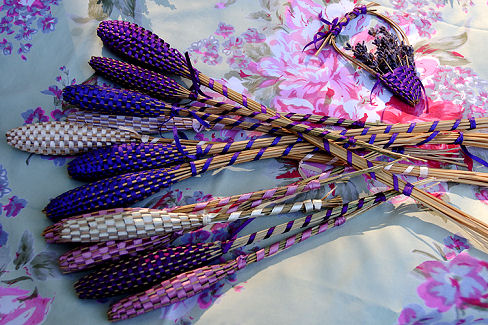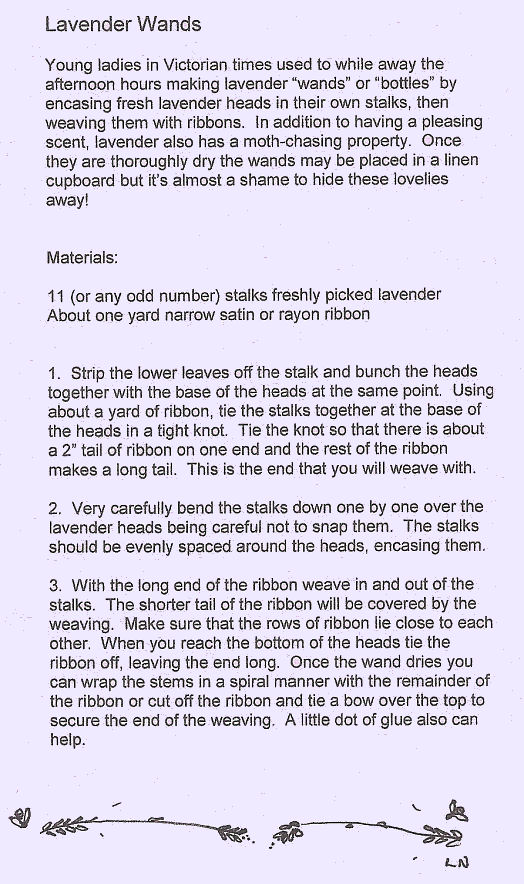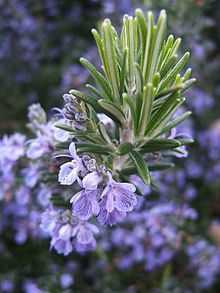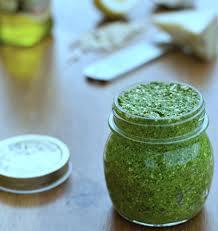I found this on the internet while searching for natural dyes to dye yarn. For my upcoming ritual I want rope and yarn made of 100% natural product but I haven’t found it in the colors I like so I decided to dye the ones I could find.Hope this helps!
THE FOLLOWING IS COPY AND PASTED FROM PIONEER THINKING. HERE IS THE WEB ADDRESS: http://www.pioneerthinking.com/crafts/crafts-basics/naturaldyes.html
“Gathering plant material for dyeing: Blossoms should be in full bloom, berries ripe and nuts mature. Remember, never gather more than 2/3 of a stand of anything in the wild when gathering plant stuff for dying.
To make the dye solution: Chop plant material into small pieces and place in a pot. Double the amount of water to plant material. Bring to a boil, then simmer for about an hour. Strain. Now you can add your fabric to be dyed. For a stronger shade, allow material to soak in the dye overnight.
Getting the fabric ready for the dye bath: You will have to soak the fabric in a color fixative before the dye process. This will make the color set in the fabric.
Color Fixatives:
Salt Fixative (for berry dyes) 1/2 cup salt to 8 cups cold water
Plant Fixatives (for plant dyes) 4 parts cold water to 1 part vinegar
Add fabric to the fixative and simmer for an hour. Rinse the material and squeeze out excess. Rinse in cool water until water runs clear.
Dye Bath: Place wet fabric in dye bath. Simmer together until desired color is obtained. The color of the fabric will be lighter when its dry. Also note that all dyed fabric should be laundered in cold water and separately.
Muslin, silk, cotton and wool work best for natural dyes and the lighter the fabric in color, the better. White or pastel colors work the best.
NOTE: It’s best to use an old large pot as your dye vessel. Wear rubber gloves to handle the fabric that has been dyed, the dye can stain your hands. It’s also important to note, some plant dyes may be toxic, check with the Poison Control Center if unsure.
A Listing Of Plant Material Available For Dyes

|
Shades Of Orange |
Shades Of Brown |
| – Alder Bark – (orange)
– Bloodroot will give a good orange to reddish orange color. – Sassafras (leaves) – Onion (skin) – orange – Lichen (gold) – Carrot – (roots) orange – Lilac (twigs) – yellow/orange – Barberry (mahonia sp.) yellow orange (with alum) very strong & permanent. Any part of the plant will work. – Giant Coreopsis (Coreopsis gigantea) Yields bright permanent orange with alum. – Turmeric dyed cloth will turn orange or red if it is dipped in lye. – Pomagrante – with alum anywhere from orange to khaki green. – Butternut – (seed husks) – orange – Eucaluptus – (leaves and bark) beautiful shades of tan, orange and brown. |
– Wild plum root will give a reddish or rusty brown.
– Oak bark will give a tan or oak color. – Sumac (leaves) – tan – Dandelion (roots) brown – Broom –(bark) – yellow/brown – Walnut (hulls) – deep brown (wear gloves) – Walnut (husks) – deep brown – black – Tea Bags – light brown, tan – White Birch – (inner bark) – brown – Juniper Berries – Fennel – (flowers, leaves) – yellow/brown – Coffee Grinds – Acorns (boiled) – Hollyhock (petals) – Colorado Fir – (bark) – tan – Yellow dock (shades of brown) – Beetroot -Dark Brown With FeSO4 – Maple Trees (Red Leaf Buds) – red-brown color when dried. Found on branches before new leaves appear only present during early spring and throughout fall. – Amur Maple (Acer Ginnala) – black, blue, brown from dried leaves. – Ivy –(twigs) – yellow/brown – Pine Tree Bark – light medium brown. Needs no mordant. – White Maple (bark) – Light brown/ buff – Alum to set – Birch (bark) – Light brown/ buff – Alum to set – St John’s Wort (blossom) – brown – Broom Sedge – golden yellow and brown – Coneflower (flowers) – brownish green ; leaves and stems – gold – Goldenrod (shoots ) – deep brown |
| Shades Of Pink | |
| – Strawberries
– Cherries – Raspberries (red) – Roses and Lavender, with a little mint and some lemon juice to activate the alkaloids can make both a brilliant pink dye and a very tasty pink lemonade. – Lichens – A pink, brown, or wine colored dye can be produced from a lichen known as British soldiers. – Camilla –It’s a nice pink-magenta. With lemon and salt. – Grand Fir -(bark) pink |
|
| Shades Of Blue – Purple | Shades Of Red |
 – Dogwood (bark) – blue – Dogwood (bark) – blue
– Red cabbage – Woad(first year leaves). Woad gives a pale to mid blue colour depending on the type of fabric and the amount of woad used. – Mulberries (royal purple) – Elderberries (lavender) – Saffron –(petals) blue/green – Grapes (purple) – Blueberries – Cornflower – (petals) blue dye with alum, water – Cherry (roots) – Blackberry (fruit) strong purple – Hyacinth – (flowers) – blue – Japanese indigo (deep blue) – Indigo (leaves) – blue – Red Cedar Root (purple) – Raspberry –(fruit) purple/blue – Red Maple Tree (purple)(inner bark) – Nearly Black Iris – (dark bluish purple) alum mordant – Dogwood – (fruit) greenish-blue – Oregon Grape –(fruit) blue/purple – Purple Iris – blue – Sweetgum (bark) – purple / black – Queen Anne’s Lace – |
– Elderberry – red
– Red leaves will give a reddish brown color I use salt to set the dye. – Sumac (fruit) – light red – Sycamore (bark)- red – Dandelion (root) – Beets – deep red – Bamboo – turkey red – Crab Apple – (bark) – red/yellow – Rose (hips) – Chokecherries – Madder (root) – red – Hibiscus Flowers (dried) – Kool-aid – Canadian Hemlock – (bark) reddish brown – Japanese Yew – (heartwood) – brown dye – Wild ripe Blackberries – Brazilwood – St. John’s Wort– (whole plant) soaked in alcohol – red – Bedstraw (root) – red
|
| Shades Of Gray – Black | Shades Of Red – Purple |
| – Iris (roots)
– Sumac (leaves) (Black) – Carob pod (boiled) will give a gray to cotton – Oak galls – makes a good black dye. – Sawthorn Oak – (seed cups) – black – Walnut (hull) – black – Rusty nails & vinegar – set with Alum. |
– Pokeweed (berries)
– Hibiscus (flowers, dark red or purple ones) – red-purple. – Daylilies (old blooms) – Safflower– (flowers, soaked in alcohol) – red – Logwood (is a good purple but you have to watch it as it dyes quick when the pot is fresh. Also it exhausts fast. We use alum to mordant and using iron can give you logwood gray.) – Huckleberry – lavender (can use it for dye and also for ink.) – Portulaca – (flowers, dried and crushed to a powder) use with a vinegar orsalt mordant, can produce strong magentas, reds, scarlets, oranges and – Beluga Black Lentils – soaked in water overnight .. yield a dark purplish / black water. The color is washfast and lightfast and needs NO MORDANT and it lasts – a beautiful milk chocolate brown (when super thick) … to a lighter medium brown or light brown when watered down. – Dark Hollyhock (petals) – mauve – Basil – purplish grey |
| Shades Of Green | Shades Of Peach/Salmon |
| – Artemisia species provide a range of greens from baby’s breath to nettle green.
– Artichokes – Tea Tree– (flowers) green/black – Spinach (leaves) – Sorrel (roots) – dark green – Foxglove – (flowers) apple green – Lilac –(flowers) – green – Camellia –(pink, red petals) – green – Snapdragon – (flowers) – green – Black-Eyed Susans – Grass (yellow green) – Pigsweed (entire plant) yellow green – Red Pine (needles) green – Nettle – Broom– (stem) green – Larkspur – green – alum – Plantain Roots – White Ash – (bark) – yellow – Purple Milkweed –(flowers & leaves) – green – Lily-of-the-valley (light green) be careful what you do with the spent dye bath. The plant is toxic so try to avoid pouring it down the drain into the water supply. – Barberry root (wool was dyed a greenish bronze-gold) – Red onion (skin) (a medium green, lighter than – Yarrow –(flowers) yellow & green shades – Mulga Acacia –(seed pods) – green – Peach – (leaves) yellow/green – Coneflower (flowers) – green – Peppermint – dark kakhi green color – Queen Anne’s Lace – pale green – Black-Eyed Susans – bright olive/apple green – Hydrangea (flowers) – alum mordant, added some copper and it came out a beautiful celery green – Chamomile (leaves) – green |
– Jewelweed – orange/peach
– Broom Flower – Virginia Creeper (all parts); alum mordant; Peach. – Achiote powder (annatto seed – Plum tree (roots) (salmon color on wool with alum) – Weeping Willow (wood & bark) makes a peachy brown (the tannin – Virgina Creeper – (fruit) – pink – Balm (blossom) – rose pink
|
|
Shades Of Yellow/Wheat |
|
– Bay leaves – yellow – Barberry (bark) – yellow – Crocus – yellow – Fustic – yellow – Saffron (stigmas) – yellow – set with Alum. – Safflower (flowers, soaked in water) – yellow – Sassafras (bark)- yellow – Syrian Rue (glows under black light) –Red Clover (whole blossom, leaves and stem) alum mordant – gold – Yellow cone flower (whole flower head); chrome mordant; Brass to Greeney-Brass. – Onion (skins) – set with Alum. – Alfalfa (seeds) – yellow – Marigold (blossoms) – yellow – Willow (leaves) – Queen Anne’s Lace – Heather– (plant) – yellow – St. John’s Wort – (flowers & leaves) – gold/yellow – Burdock – Celery (leaves) – Golden Rod (flowers) – Sumac (bark) – The inner pith of Sumac branches can produce a super bright yellow color. – Weld (bright yellow) – Old man’s beard lichen – yellow/brown/orange shades – Oregon-grape roots – yellow – Cameleon plant (golden) – Mimosa– (flowers) yellow – Dandelion flower – Osage Orange also known as Bois d’arc or hedgeapple (heartwood, inner bark, wood, shavings or sawdust) (pale yellow) – Daffodil flower heads (after they have died); alum mordant – Mullen (leaf and root) pale yellow. *careful, because the little fuzzy hairs can make one itchy! – Hickory leaves (yellow) if plenty of leaves are boiled and salt added. – Tea ( ecru color) – Yellow, Curly, Bitter, or Butter Dock (despite various leaf shapes, all have a bright yellow taproot) gives you a yellow/flesh color. – White mulberry tree (bark) Cream color onto white or off-white wool. Alum mordant. – Paprika -pale yellow – light orange) – Peach (leaves) – yellow – Beetroot (yellow) (alum & K2Cr2O7) – Turmeric (spice) –bright yellow – Oxallis (wood sorrels) (flowers) – the one with the yellow flowers. Use the flower heads, some stem ok. It is nearly fluorescent yellow, and quite colorfast on alum mordanted wool. If the oxalis flowers are fermented or if a small dash of cloudy ammonia is added to the dyebath (made alkaline) the fluorescent yellow becomes fluorescent orange. Usually I do this as an after-bath, once I have the initial colour. Useful for shifting the dye shade, and some good surprises in store! – Dahlia Flowers (Red, yellow, orange flowers) make a lovely yellow to orange dye for wool. –Mulga Acacia -(flowers) – yellow – Sunflowers – (flowers) – yellow – Dyer’s Greenwood (shoots) – yellow – Tansy (tops) – yellow – Yarrow – yellow and gold |
”
Just to remind, the source for this information is: http://www.pioneerthinking.com/crafts/crafts-basics/naturaldyes.html














